SVT: Art Exhibition in Borås Halted for Security Reasons
PUBLISHED September 6, 2023
The Borås Culture House chooses to cancel artist Sadaf Ahmadi’s exhibition for security reasons and the potential for people to be offended.
– It has direct connections to the situation with the Quran burnings, says Ida Burén, cultural chief in Borås.
Sadaf Ahmadi’s exhibition consists of two parts. One features works symbolizing women murdered by the regime in Iran. The other, now halted, comprises concrete-covered sculptures depicting women in full-length veils, known as chadors.
– It comes from my childhood when I had to cover my head and body. I have tried to show spirituality, but at the same time, the rule of the Islamic regime, says Sadaf Ahmadi, who fled Iran to escape the regime’s oppression.
The exhibition was shown in France during the spring, and Sadaf Ahmadi had contact with the Borås Culture House, which booked the exhibition for September this year. But now they have changed their minds, as reported by Borås Tidning.
Joint risk assessment
Ida Burén, cultural chief in Borås, says the decision is based on a risk assessment made by the cultural administration together with the Center for Knowledge and Security in Borås.
– They share the image of the explosive power of the work and recommend a different placement of the work, and we have not been able to solve that practically, says Ida Burén.
The cultural chief argues that the work could be exposed to different forces, leading to potentially unsafe situations.
– The work could give rise to different types of interpretations, says Ida Burén.
Isn’t that the purpose of art?
– It is, and if we were in the art museum, we would have had the capacity to handle it, but in this open space, we cannot.
“Not comparable to Quran burnings”
But for Sadaf Ahmadi, it is a reminder of censorship in Iran.
– The strange thing for me is that they said this to me in Sweden, which is known for its freedom of expression and democracy. How is that possible?
But can’t you understand that people are cautious considering the elevated threat level?
– It is not possible to compare Quran burnings with an art exhibition; they are two completely different things. Besides, I am talking about human rights and women’s rights, says Sadaf Ahmadi.”
SVT: Sadaf Ahmadi turns down the Cultural Center's offer of a new venue: "Like a dark shoebox"
UPDATED September 8, 2023 | PUBLISHED September 7, 2023
Sadaf Ahmadi, the artist who is not allowed to exhibit hanging female statues in chadors in Borås, is currently receiving attention from various quarters. She is now receiving invitations, including one to exhibit in the European Parliament.
“This is criticism of political Islam, and I see strong reasons to support that,” says Charlie Weimers (SD), a Member of the European Parliament.
Sadaf Ahmadi confirms to SVT that she has received several invitations after it became known that she is not allowed to exhibit at Borås Cultural Center.
Politicians react
Charlie Weimers, an EU parliamentarian from the Sweden Democrats, invited Sadaf Ahmadi after learning that parts of the exhibition had been stopped.
“I have not yet received a response, but I have explained that if she chooses to accept, it is by no means a statement in favor of our party’s politics. It’s simply an opportunity to exhibit her art in the European Parliament,” he says.
Parliamentarians can invite
EU parliamentarians have the opportunity to exhibit art in the parliament twice during a mandate period. For example, representatives of the Liberals have previously exhibited the photo exhibition “Last Night in Sweden” after Trump’s statement in 2016, and Left Party’s Malin Björk has previously exhibited the art of Elisabeth Olsson Wallin.
“I cannot see a better way to use my place than to dedicate it to this,” says Charlie Weimers.
He strongly criticizes the decision of Borås Cultural Chief Ida Burén to stop parts of the exhibition in the foyer of Borås Cultural Center for security reasons.
“In this case, it is pure censorship. Ahmadi is clear that it is not criticism of Islam but of political Islam, the veil mandate, and the regime in Iran. And I see very strong reasons to support that.”
At the same time, we have the second-highest terrorism threat level in Sweden; don’t we need to protect Swedish citizens?
“We have to ask ourselves if the best way to protect Swedish citizens is to give up freedom of expression.”
Even cultural politicians in Uddevalla are interested in exhibiting Ahmadi’s art. Henrik Sundström (M), the second vice-chairman of the municipal board, says he is seeking contact with her.
"Faint-hearted and Timid"
PUBLISHED September 6, 2023
Borås Cultural Center chooses to cancel the exhibition of artist Sadaf Ahmadi for security reasons, citing the Quran burnings and the potential for people to be offended. Now, GP’s cultural chief and former Borås resident, Johan Hilton, reacts.
“I can understand feeling fear, but it is all the more important to show backbone in such a matter,” he says.
Artist Sadaf Ahmadi fled Iran to escape the regime’s oppression. Her exhibition has been shown in France during the spring, and now it was supposed to be the turn of Borås Cultural Center. However, after initially accepting the exhibition this spring, the Cultural Center now chooses to cancel.
A decision that GP’s cultural chief, Johan Hilton, does not understand at all.
“I think one is bending to a specter that doesn’t even exist, bending to imagined threats rather than concrete threats,” he says.
Listen to Johan Hilton about the canceled art exhibition in the clip.
LE MONDE: In Sweden, censorship hovers above the ghosts of the Iranian Resistance
By Anne-Françoise Hivert(Malmö (Sweden) correspondent)
Published on September 23, 2023, at 3:00 am (Paris), updated on September 23, 2023
The city of Borås has decided not to showcase Sadaf Ahmadi’s sculptures for security reasons. The Tehran-born artist wished to denounce through her work the regime’s repressive discourses against women.
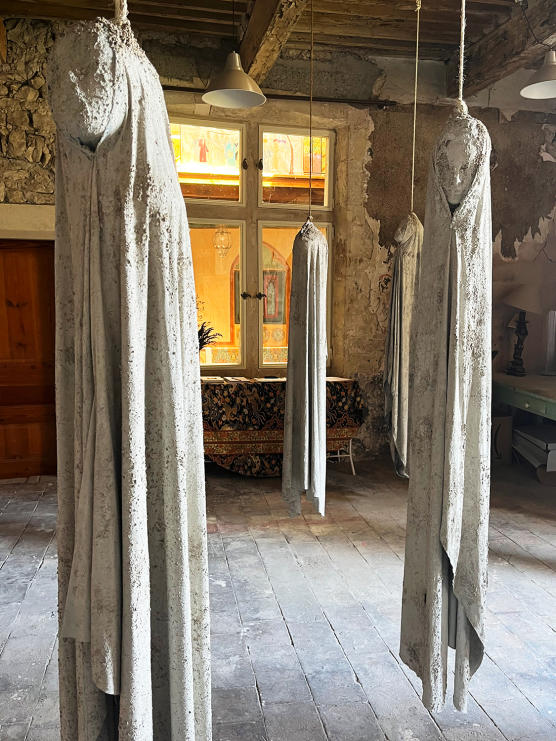
She is still in shock, stunned by the decision; Once again, she can sense the “shadow” floating over her, a shadow that haunted her all her life, and from which she thought she would finally be freed by leaving Iran. Three years ago, Sadaf Ahmadi emigrated to Sweden with her husband. Since then, the artist born in Tehran in 1985 has lived in Borås, a town of 114,000 inhabitants, some 60 kilometers east of Gothenburg. On September 16, the first anniversary of Mahsa Amini’s death in Iran, she was due to present two exhibitions at the town’s cultural center. But, 10 days before the opening, the municipality decided to cancel one of them, for security reasons.
The banned works consist of a dozen veiled women’s faces, sculpted in concrete and suspended from the ceiling by a wire. In an interview with local newspaper Borås Tidning, director of culture Ida Burén justified her decision by citing “the general security situation” in Sweden. On August 17, intelligence services raised the terrorist alert level from three to four on its five-point scale. A few days earlier, Al-Qaeda had encouraged Muslims in Europe to “take revenge” against the Scandinavian kingdom for the Qurans burned there since the start of the year.
EURO NEWS: Sadaf Ahmadi's 'Concrete' exhibition was praised when shown in France. Why won't it go on show fully in Borås?
Jonny Walfisz
Iranian artist Sadaf Ahmadi’s upcoming exhibition at Kulturhuset in Borås, Sweden has been censored by the gallery, the artist claims.
Ahmadi was born in Tehran, but moved to Borås where she has worked as a filmmaker and artist. Moved by the protests following the death of Mahsa Amini, a 22-year-old woman who was taken into Iranian police custody for not wearing a hijab according to government standards, Ahmadi created ‘Concrete’.
The innovative exhibition features portraits of people killed by the Iranian state. The portraits are covered in concrete, and Ahmadi asks visitors to break the concrete to reveal the hidden tales of Iran’s tragically lost people.
Alongside the portraits, ‘Concrete’ also features a walk-through exhibit of 10 veiled heads, hanging ghost-like from ropes. Alongside the portraits, the heads provoke a haunting sense of lives covered up and ultimately lost.
‘Concrete’ was first exhibited in March at La Maison des Chapitres in Forcalquier, France. Another exhibition followed at Paris’ Espace des Blancs Manteaux. Both were well received and went without incident.
The success of ‘Concrete’ led Ida Burén, the Head of Culture and Administration for Borås to bring the exhibition to the city’s culture centre Kulturhuset.
Due to start this month, Ahmadi was contacted earlier this week by the gallery’s curator claiming there would be security issues with staging the exhibition.
The concerns were regarding the hanging sculptures that were planned to be in the Kulturhuset’s entrance. The curator was concerned with the “work’s religious motif image which the viewer may be close to and/or associated with other religious actions such as the ongoing Koran burnings, and the increased risk image and increased security level that applies in Sweden,” they wrote to Ahmadi.
After contacting the city’s Cultural Administration, the gallery concluded that “ we would have had to raise the security level significantly in the Culture Center by bringing in guards during opening hours, having night patrols to avoid vandalism, etc.”
Ahmadi says the gallery was also concerned about reactions from Sweden’s far-right supporters.
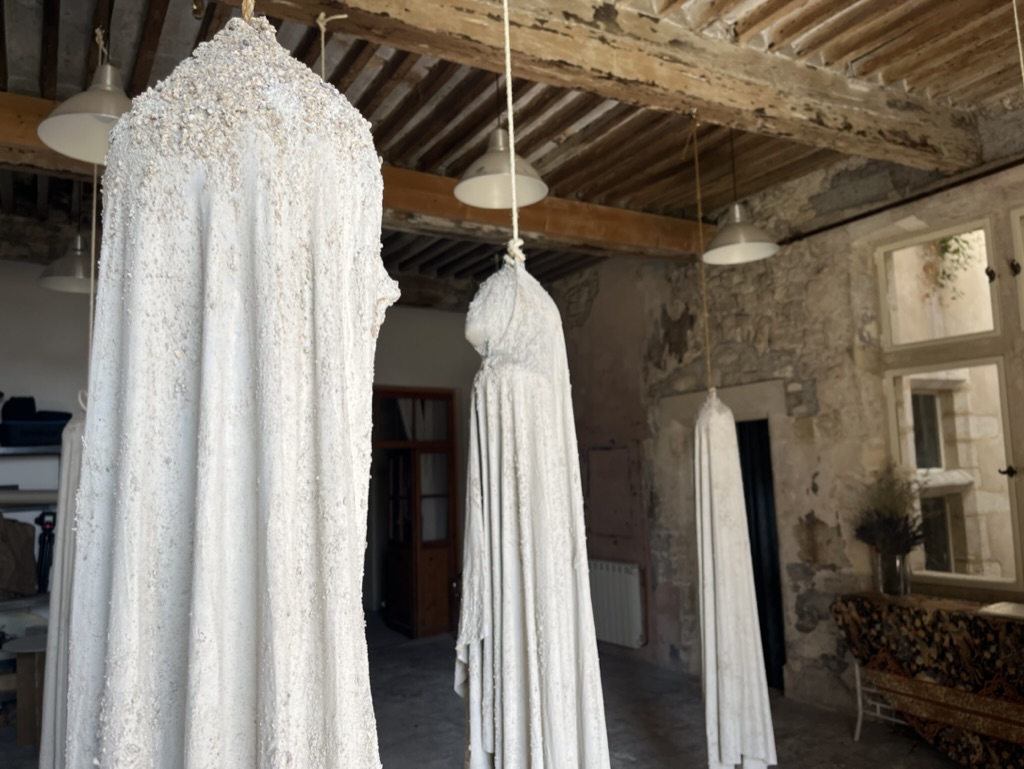
“I was shocked. I was scared again,” Ahmadi tells Euronews Culture. “The same thing was happening to me that happened in Iran.” Even after she left Iran, she tells of how the experience of censorship in the country caused her to start “censoring myself.”
“Being censored is like raising a baby for nine months. And when you give birth to that baby, the baby is killed by a doctor. And there is nothing else you can do,” Ahmadi says.
When she moved to Sweden in 2020, she thought she was finally free to talk and create. ‘Concrete’ was the result of that. “Concrete is something that symbolically and in reality is covering everything in Islamic regime,” Ahmadi says.
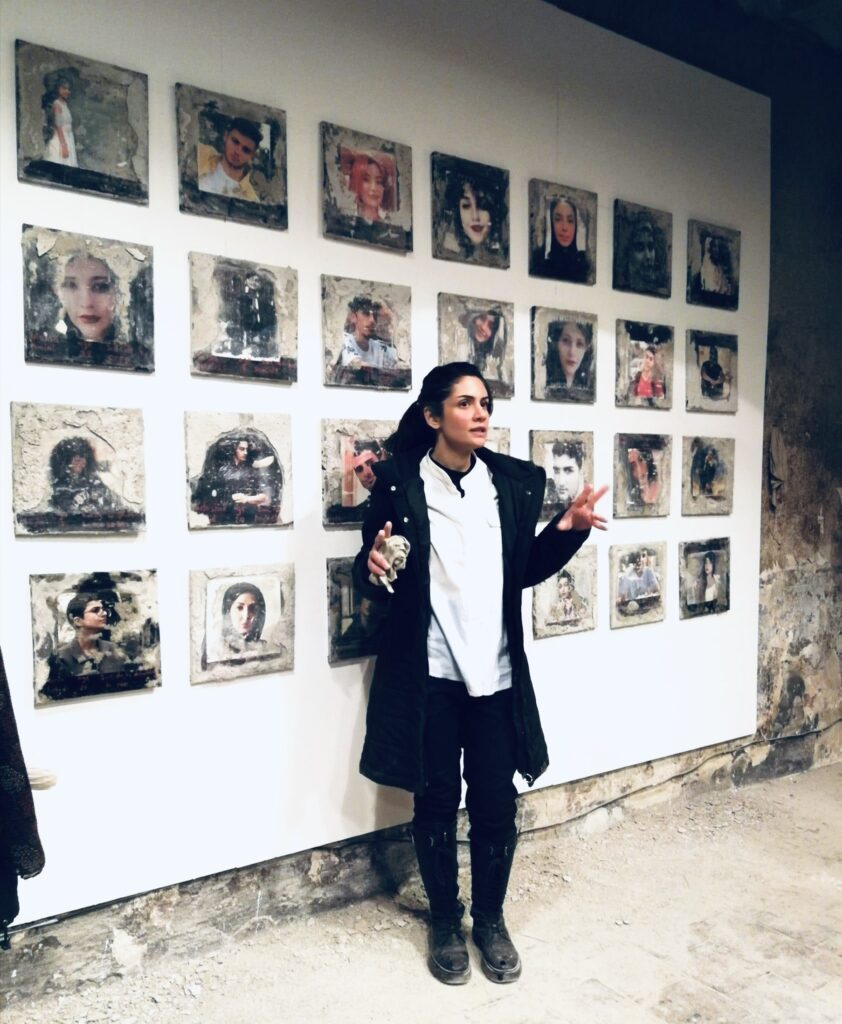
The Kulturhuset offered to continue to show ‘Concrete’, but instead of putting the hanging veiled heads in the entrance, to move it to a small black-box theatre in the basement. Ahmadi was only offered this after “we made a stink about being censored,” explains her manager, Basil Glew-Galloway.
“It hurts because this installation is supposed to be open,” Ahmadi says, noting also the work already done with engineers to design the installation for the original exhibition space.
Ahmadi insists that her work, particularly the hanging veiled heads, are not meant as a criticism of Islam entirely, but of the Islamic Republic of Iran. “Everyone I know in Iran who believe they are Muslims, it doesn’t stop them from being themselves and desiring their freedoms.”
The civil unrest that followed Mahsa Amini’s death shows the side of Iran’s society that is against government censorship and the enforcement of laws such as those around the hijab. “I used the concrete to show the heaviness of the rules and all these obligations that I had to have, as a nine years old girl, and carry with me my whole life.”
Ahmadi points out a recurring phrase throughout the protests. “Freedom is an everyday practice.” While Ahmadi has encompassed that phrase into her art, the irony of censorship following her to Sweden is not lost on her.
AFTONBLADET: "Borås Halts Artwork – for Security Reasons"
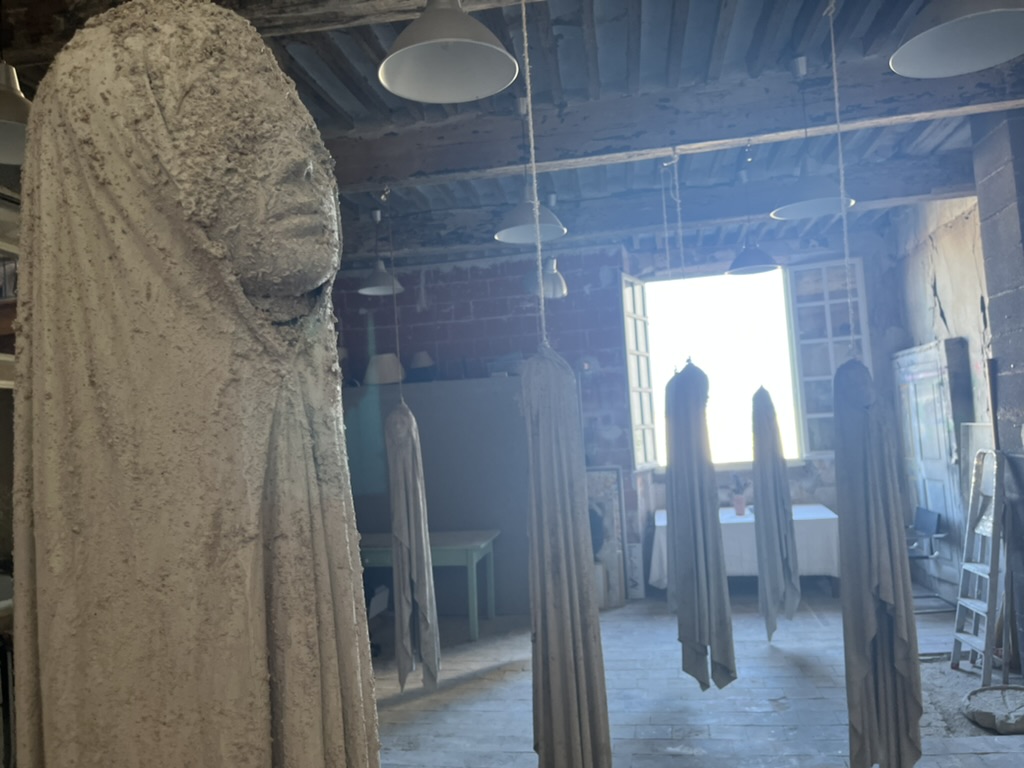
The artist Sadaf Ahmadi is critical of the decision.
“It sounds exactly like in Iran,” she says to Borås Tidning.”
Sadaf Ahmadi has previously exhibited her sculptures, depicting women in the Iranian full-body veil known as the chador, at various locations in France. However, in her hometown of Borås, the same exhibition has now been partially halted, citing reasons such as the Quran burnings and the potential for people to be offended, as reported by Borås Tidning.
“This feels like censorship, and it’s not the right way to handle these important issues,” says Sadaf Ahmadi to TT. “I see art as a way to shed light on the issue of women’s rights in Iran. When you censor it, isn’t the same thing happening as in Iran?”
Opening on Anniversary
One part of the exhibition, a series of portraits of individuals who have died in connection with protests for women’s rights in Iran, will be displayed in the cultural center starting on September 16 as planned. This date marks the anniversary of the death of 22-year-old Mahsa Zhina Amini in Iran last year.
However, the concrete sculptures have been stopped.
Ida Burén, the cultural chief in the city of Borås, notes that the security-political situation has changed since the initiative for the exhibition was taken.
“It has been a very difficult decision to make considering the role of art and culture in society. However, it is a comprehensive assessment, which also involves the placement of the artwork in our cultural center, an open space where all residents of Borås can enter,” says Ida Burén.
“If it had been exhibited in the art museum, the issue could have been handled in a completely different way. Now I had to make a comprehensive assessment based on the fact that it is precisely in our open cultural center.”
TT: How do you view the perception that this might be seen as censoring an artist who wants to use her freedom of expression to criticise the regime in Iran?
“I can understand that, with Sadaf’s history and background, I understand her perspective on the matter. It is a dilemma as a cultural chief to have to make this decision. However, it is a risk assessment that has been made.”
EXPRESSEN: Victor Malm: Islamists Cannot Be Given Power Over Our Freedoms
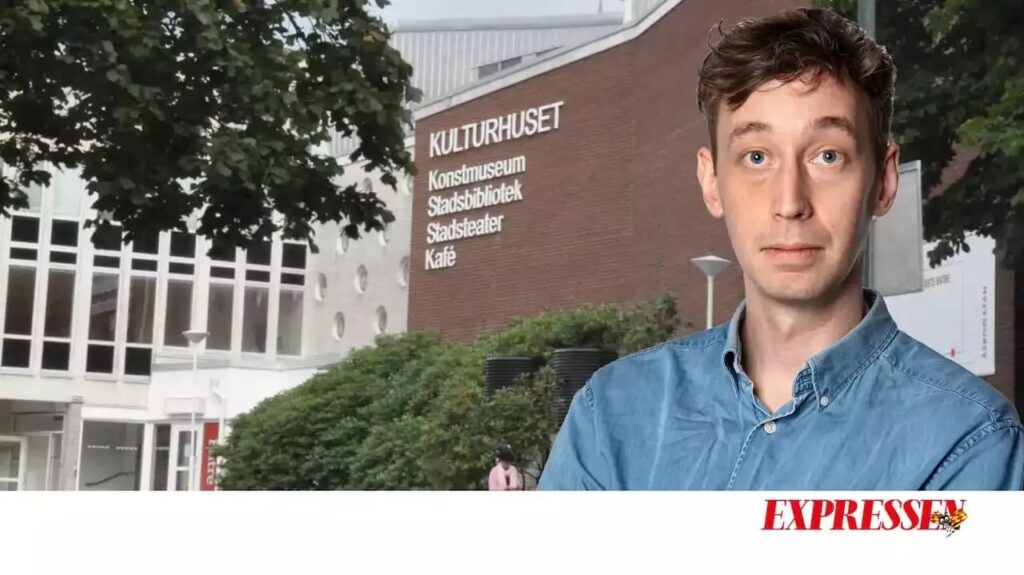
Borås Cultural Center has halted an exhibition by the artist Sadaf Ahmadi. Victor Malm cautions against bureaucrats who conform to theocratic demands. Nygaard interrupted Rushdie. He was proud to have published the novel. He would never entertain the idea of blaming anyone other than the perpetrator.
Furthermore, he had already commissioned a significant reprint of the novel.
Moral resilience of this nature is uncommon. It is always simpler to abstain, to lack the courage to remain steadfast to principles, especially when the threat is palpable. In contrast to Nygaard, we find in Borås a cultural chief who has halted an exhibition by the exiled Iranian artist at Borås Cultural Center. Specifically, a portion of the exhibition consisting of ethereal concrete sculptures depicting women draped in full veils is considered potentially hazardous. This is due in part to the general unease stirred by Quran burnings and the concern that individuals may feel offended or hurt by these concrete-covered women adorned in chadors, symbolically representing Ahmadi’s own experiences of women’s oppression under the Iranian regime.
ARBETE: The censorship at Borås Cultural Center exemplifies the consequences of blasphemy prohibitions. Johannes Klenell comments on Borås Art Hall's decision to halt portions of Sadaf Ahmadi's exhibition, "Concrete."

https://arbetet.se/av/johannes-klenell/
COMMENTARY
In the wake of Quran burnings, thoughts of prohibitions loom large. It is tempting to assume that it only concerns the overt narcissists and racists expressing their hatred towards Muslims. I can understand that sentiment. I might even sympathize.
I, too, am deeply troubled by the evident underlying hatred of figures like the Danish individual Rasmus Paludan.
However, each time I approach what we might term blasphemy laws, an internal image is ignited in my mind. It is from the documentary “Nothing Compares,” where the artist Sinéad O’Connor tears apart a photograph of the Pope during her performance on Saturday Night Live in 1992.
She protested, far ahead of her time, against the symptomatic abuses of the Catholic Church against children. Against religious oppression in Catholic Ireland.
I cannot quite let go of the story of how the world turned against her. The jeers and insults she endured. How she was ostracized as an artist.
Stand Up for O’Connor
I repeatedly come to the conclusion that, no matter how wrong and how much harm the racist Paludan— who should be held accountable for his incitement without necessarily invoking blasphemy—commits, society’s foremost principle must be to stand up for O’Connor.
That’s why I’ve been frustrated by how casually we, pressured into compliance by Turkey’s threat of withheld NATO membership against a government entirely lacking a backbone, are leaning towards a zeal for prohibition.
A march towards censorship. From the right to protest against oppression.
Removing Parts of “Concrete”
Yesterday, we received notice that Borås Cultural Center is removing parts of the exhibition “Concrete” by the Iranian artist Sadaf Ahmadi. The artist was raised in Tehran, and the cement objects depict veiled women.
The symbolism is as comprehensible as it is unprovocative. The cement embodies the weight of the veil.
Culture Chief Ida Buren refers to “security threats,” “Quran burnings,” and states that the decision was “very difficult.” It should not have been.
This is the consequence of an unholy union between Swedish nervous bureaucracy, a government willing to throw anything under the bus for NATO membership, a dominant Time Law party with fervent hatred towards Muslims, and raging theocracies, all seemingly getting what they desire.
Resistant voices are silenced. Those who scream the loudest win.
Pauldan took over the room
The consequence of the current discourse became exactly what worried me. Paludan took over the room—O’Connor was silenced. For that is the doomed reality.
The discussion about Borås Cultural Center is, in essence, a conversation about where the path leading to blasphemy laws takes us. My answer is that it leads straight to hell.
The application becomes blunt in its signals to society, where nervous culture chiefs shut down—yes, censor—art.
I guess both Richard Jomshof, the Iranian regime, and Erdogan applaud the result.
DAGENS NYHETER: The artist Sadaf Ahmadi aims to illuminate the protests for women’s rights in Iran through her art.
Parts of the exhibition by the Iranian artist Sadaf Ahmadi at Borås Cultural Center are being halted by the municipality’s cultural chief, citing the elevated threat level of terrorism.
Sadaf Ahmadi herself likens this situation to the art censorship she experienced in Iran.
“When subjected to censorship in Iran, they say the same thing to me as they are saying now, that it is too sensitive for devout Muslims and too hurtful for them to see this,” she says.
The artist Sadaf Ahmadi left Iran to escape the authoritarian regime’s censorship of her artworks. Now, her artworks are being halted in Sweden as well, citing the current security situation after the Quran burnings, as first reported by Borås Tidning.
“It is very frustrating and sad, and I feel all sorts of emotions about it. Censorship is something that happens in Iran, and it is strange to normalize it in Sweden, where we have democracy and freedom of expression,” says Sadaf Ahmadi.
She recounts that many of her exhibitions and installations in Iran have been censored and stopped, stating that she recognizes the reasoning:
“When subjected to censorship in Iran, they say the same thing to me as they are saying now, that it is too sensitive for devout Muslims and too hurtful for them to see this,” she says.
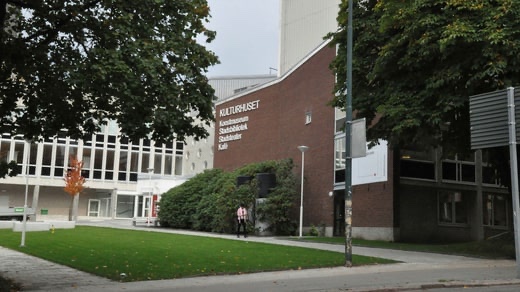
Sadaf Ahmadi’s exhibition “Concrete” is divided into two parts. The first part focuses on the women’s rights protests against the mandatory wearing of veils in Iran that erupted last year, and it also explores those who have lost their lives during the uprising.